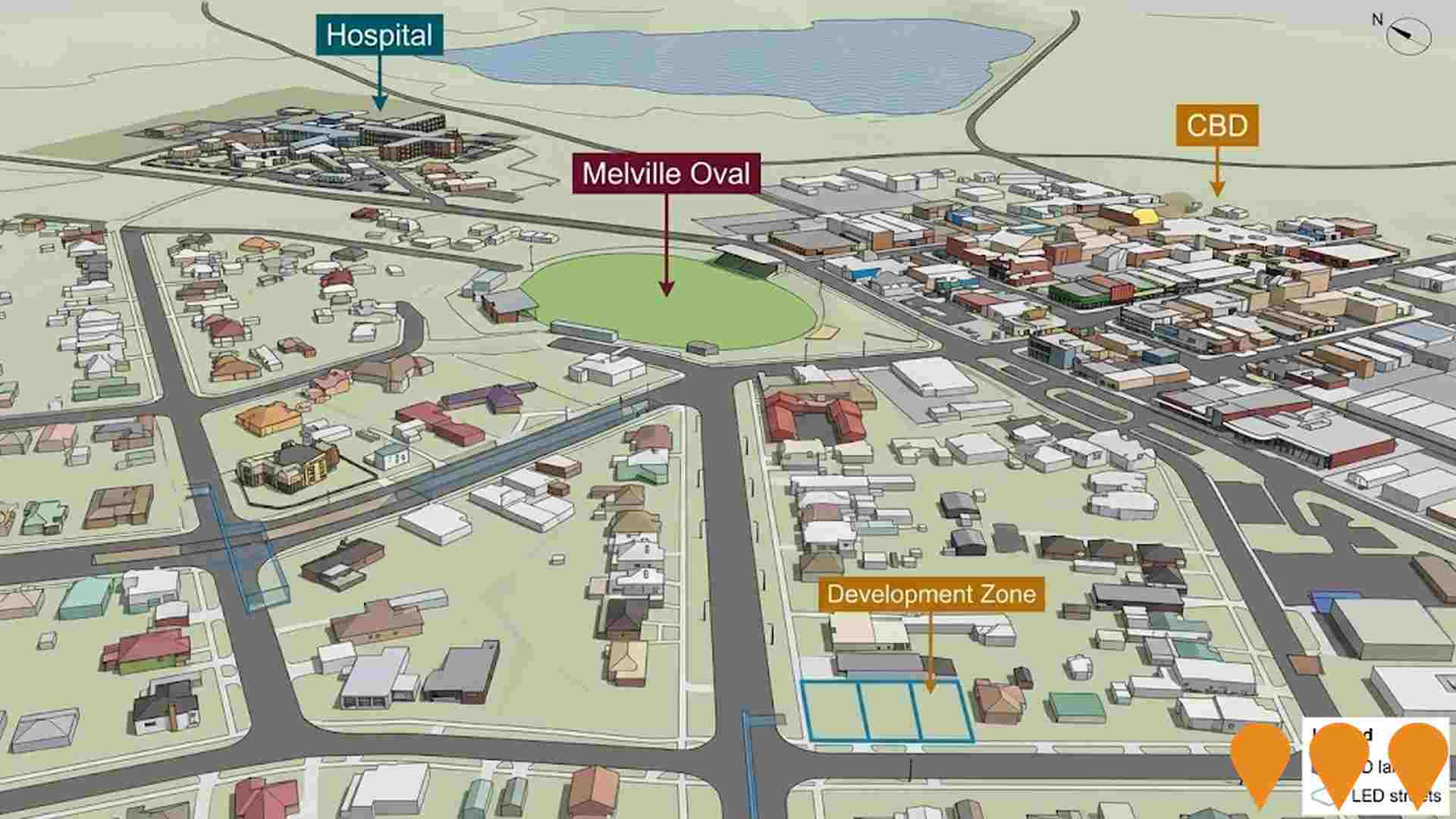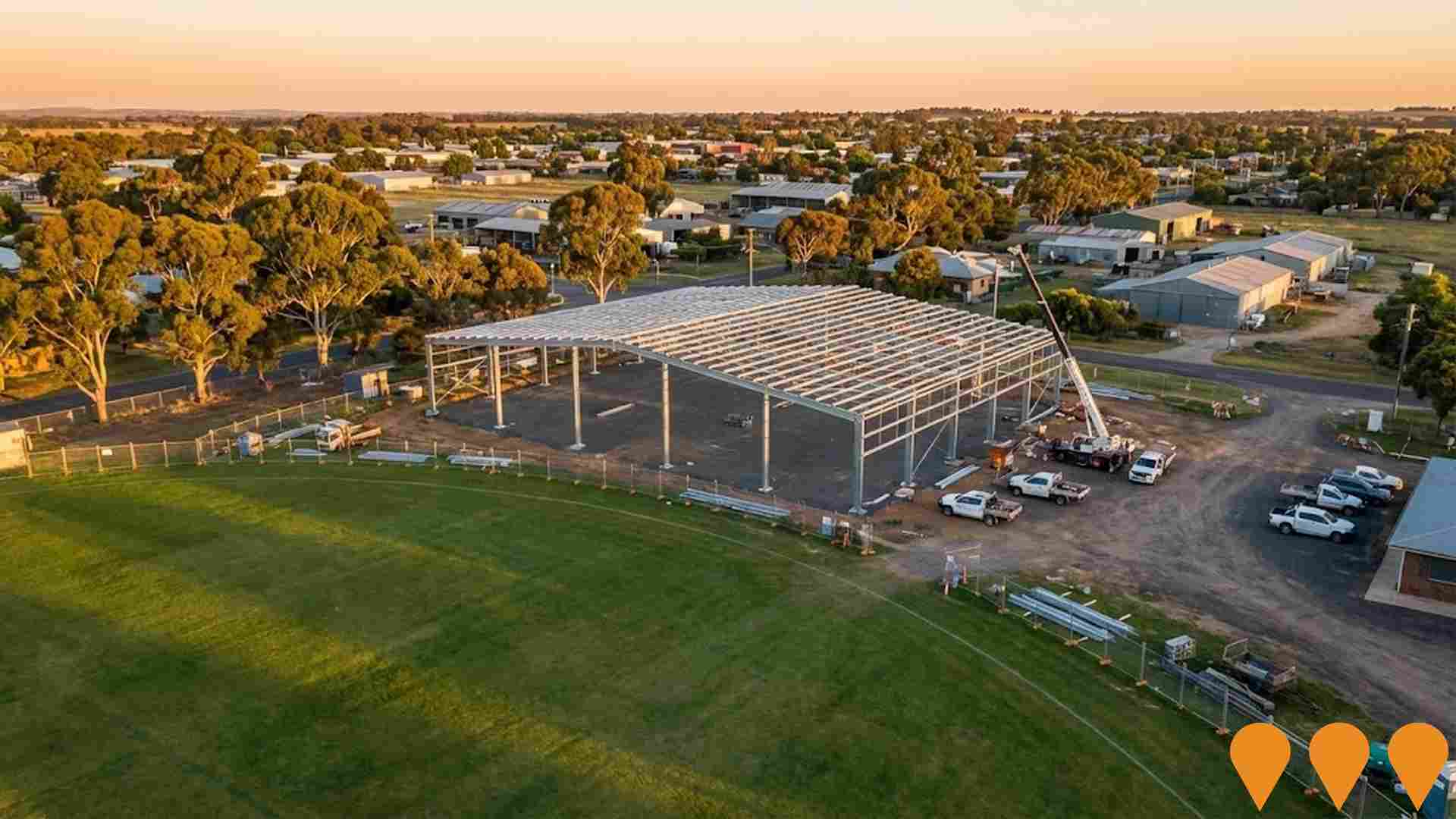Chart Color Schemes
est. as @ -- *
ABS ERP | -- people | --
2021 Census | -- people
Sales Activity
Curious about local property values? Filter the chart to assess the volume and appreciation (including resales) trends and regional comparisons, or scroll to the map below view this information at an individual property level.
Find a Recent Sale
Sales Detail
Population
Hamilton is positioned among the lower quartile of areas assessed nationally for population growth based on AreaSearch's assessment of recent, and medium term trends
Hamilton's population, as of August 2025, is approximately 10,600. This figure represents an increase of 254 people since the 2021 Census, which recorded a population of 10,346. The growth is inferred from ABS data showing an estimated resident population of 10,374 in June 2024 and the addition of 125 new addresses validated since the Census date. This results in a population density of 53 persons per square kilometer. Hamilton's growth rate of 2.5% since the 2021 census surpasses that of its SA3 area (0.7%), indicating it as a region leader in population increase. Overseas migration was the primary driver for this growth.
AreaSearch uses ABS/Geoscience Australia projections for each SA2 area, released in 2024 with a base year of 2022. For areas not covered by this data, AreaSearch employs VIC State Government's Regional/LGA projections from 2023, adjusted using weighted aggregation methods to SA2 levels. Growth rates by age group are applied across all areas for the years 2032 to 2041. Future population projections suggest a median increase in line with Australia's regional areas, with Hamilton expected to gain 642 persons by 2041, representing a total growth of 3.5% over 17 years.
Frequently Asked Questions - Population
Development
Residential development activity is lower than average in Hamilton according to AreaSearch's national comparison of local real estate markets
Hamilton has recorded approximately 37 residential properties granted approval annually over the past five financial years, totalling 189 homes. As of FY26, 3 approvals have been recorded. On average, 0.4 new residents arrive per year for each new home constructed between FY21 and FY25, indicating that new supply is meeting or exceeding demand, providing ample buyer choice and capacity for population growth. The average construction value of new properties is $572,000, slightly above the regional average, suggesting a focus on quality developments.
This financial year has seen $22.2 million in commercial approvals registered, demonstrating moderate levels of commercial development. Hamilton's development levels are similar to those of the rest of Victoria per person, supporting market stability aligned with regional patterns. However, recent periods have shown some moderation in development activity. New building activity comprises 76.0% standalone homes and 24.0% townhouses or apartments, preserving the area's low density nature and catering to space-seeking buyers.
This marks a shift from existing housing patterns, which are currently 91.0% houses, suggesting diminishing developable land availability and responding to evolving lifestyle preferences and affordability needs. The estimated population per dwelling approval is 443 people, reflecting Hamilton's quiet, low activity development environment. By 2041, Hamilton is projected to grow by 374 residents. Based on current development patterns, new housing supply should readily meet demand, offering good conditions for buyers and potentially facilitating population growth beyond current projections.
Frequently Asked Questions - Development
Infrastructure
Hamilton has emerging levels of nearby infrastructure activity, ranking in the 38thth percentile nationally
Changes to local infrastructure significantly affect an area's performance. AreaSearch has identified seven projects that could impact this region. Notable ones are New Hamilton Gallery, Lakes Edge Residential Development, Hamilton Community and Government Hub, and Hamilton Structure Plan Implementation. The following details those most relevant:.
Professional plan users can use the search below to filter and access additional projects.
INFRASTRUCTURE SEARCH
 Denotes AI-based impression for illustrative purposes only, not to be taken as definitive under any circumstances. Please follow links and conduct other investigations from the project's source for actual imagery. Developers and project owners wishing us to use original imagery please Contact Us and we will do so.
Denotes AI-based impression for illustrative purposes only, not to be taken as definitive under any circumstances. Please follow links and conduct other investigations from the project's source for actual imagery. Developers and project owners wishing us to use original imagery please Contact Us and we will do so.
Frequently Asked Questions - Infrastructure
Hamilton Structure Plan Implementation
Long-term land use and development plan for Hamilton, adopted in 2011, guiding future residential, commercial, and industrial development. It includes zoning changes, infrastructure planning, and strategic land release to accommodate population growth. The ongoing implementation includes related projects like the Hamilton CBD Streetscape Revitalisation and the Hamilton CBD Masterplan, which are currently in the concept design and detailed design stages.
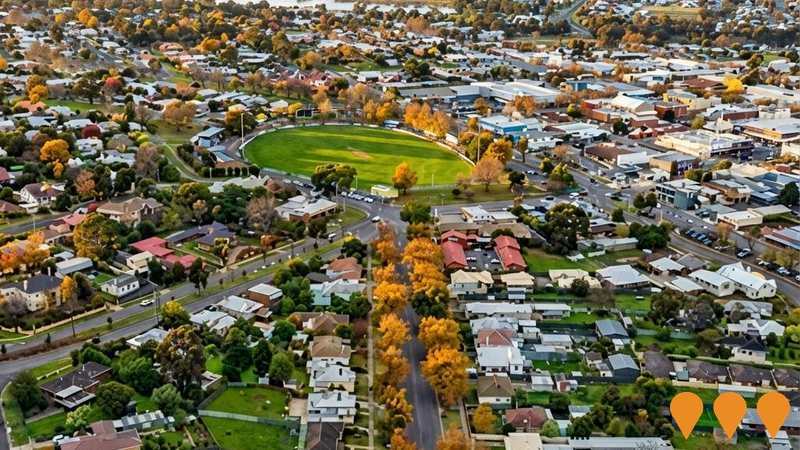
Lakes Edge Residential Development
Master-planned residential community by Piece Property Pty Ltd on 22 hectares of council land near Lake Hamilton. The development is planned to provide 350+ new homes, public open space, and a 120+ placement childcare centre as part of Stage 1 to address the critical regional housing shortage.
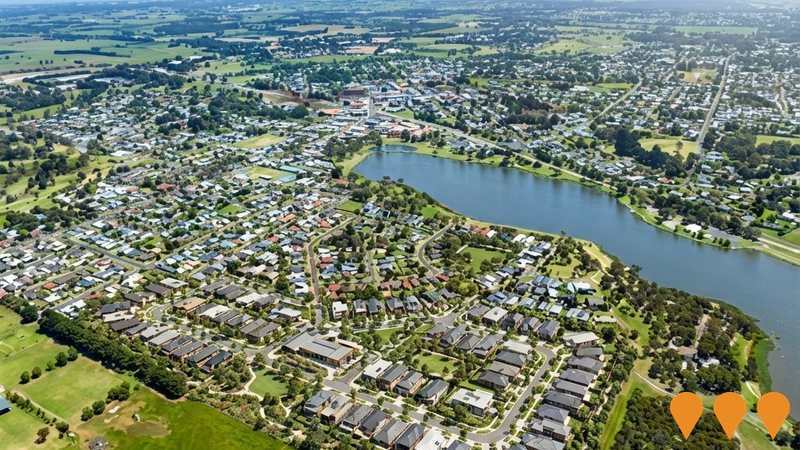
New Hamilton Gallery
A redevelopment of Hamilton Gallery designed by internationally renowned architect Angelo Candalepas and Associates. The project aims to position the New Hamilton Gallery as a national leader in regional art galleries by featuring enhanced exhibition spaces, collection storage, community areas, and educational facilities, while preserving the building's heritage character. The total construction cost is currently estimated at $48.9 million, with a total project fundraising target of $70 million. Concept designs were endorsed in July 2025, and the project is currently in the detailed design stage, which is anticipated to be completed by March 2026.
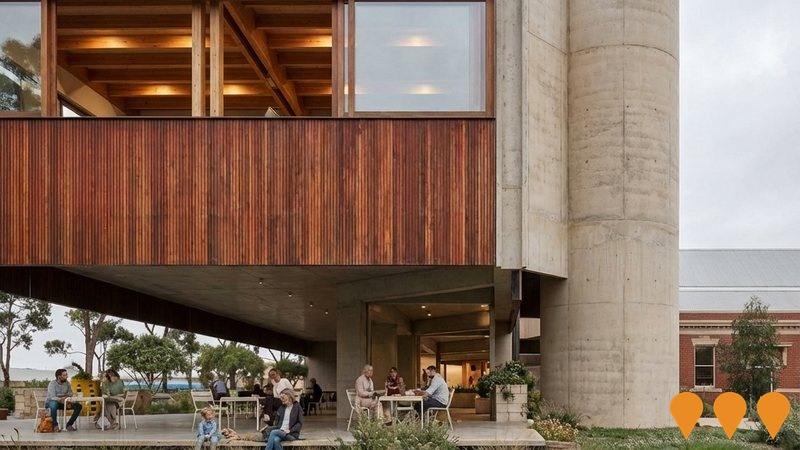
Hamilton Community and Government Hub
A multipurpose community facility that will include a new Hamilton Library, Digital Hub, government service delivery offices (including potential space for local government and other agencies), multipurpose spaces for meetings and events, and a Civic Square. The project is an integral part of the Hamilton Community and Cultural Precinct development, along with the New Hamilton Gallery and CBD Streetscape Revitalisation. Detailed design is currently underway following the appointment of Lyons Architecture and local firm Cooper Scaife in November 2025. Demolition of the existing buildings on the Lonsdale Street site is scheduled to commence on 27 January 2026.

Hamilton CBD Streetscape Revitalisation
Multi-stage CBD revitalisation project focusing on streetscape improvements between Kennedy and Cox Streets and French and Lonsdale Streets. It includes new paving, street furniture, lighting, trees, landscaping, and accessibility improvements to create a more attractive, functional, and pedestrian-friendly town centre. The project will be constructed in three packages over multiple years, with Package 1 currently in the detailed design stage and expected to be delivered in 2025. Council appointed Group GSA Pty Ltd as landscape consultants. Consultation has occurred on concept plans, and a Project Advisory Group has been formed.

Low and Mid-Rise Housing Policy
State-wide NSW planning reforms via amendments to the State Environmental Planning Policy to enable more diverse low and mid-rise housing (dual occupancies, terraces, townhouses, manor houses and residential flat buildings up to 6 storeys) in well-located areas within 800 m of selected train, metro and light-rail stations and town centres. Stage 1 (dual occupancies in R2 zones statewide) commenced 1 July 2024. Stage 2 (mid-rise apartments, terraces and dual occupancies near stations) commenced 28 February 2025. Expected to facilitate up to 112,000 additional homes over the next five years.
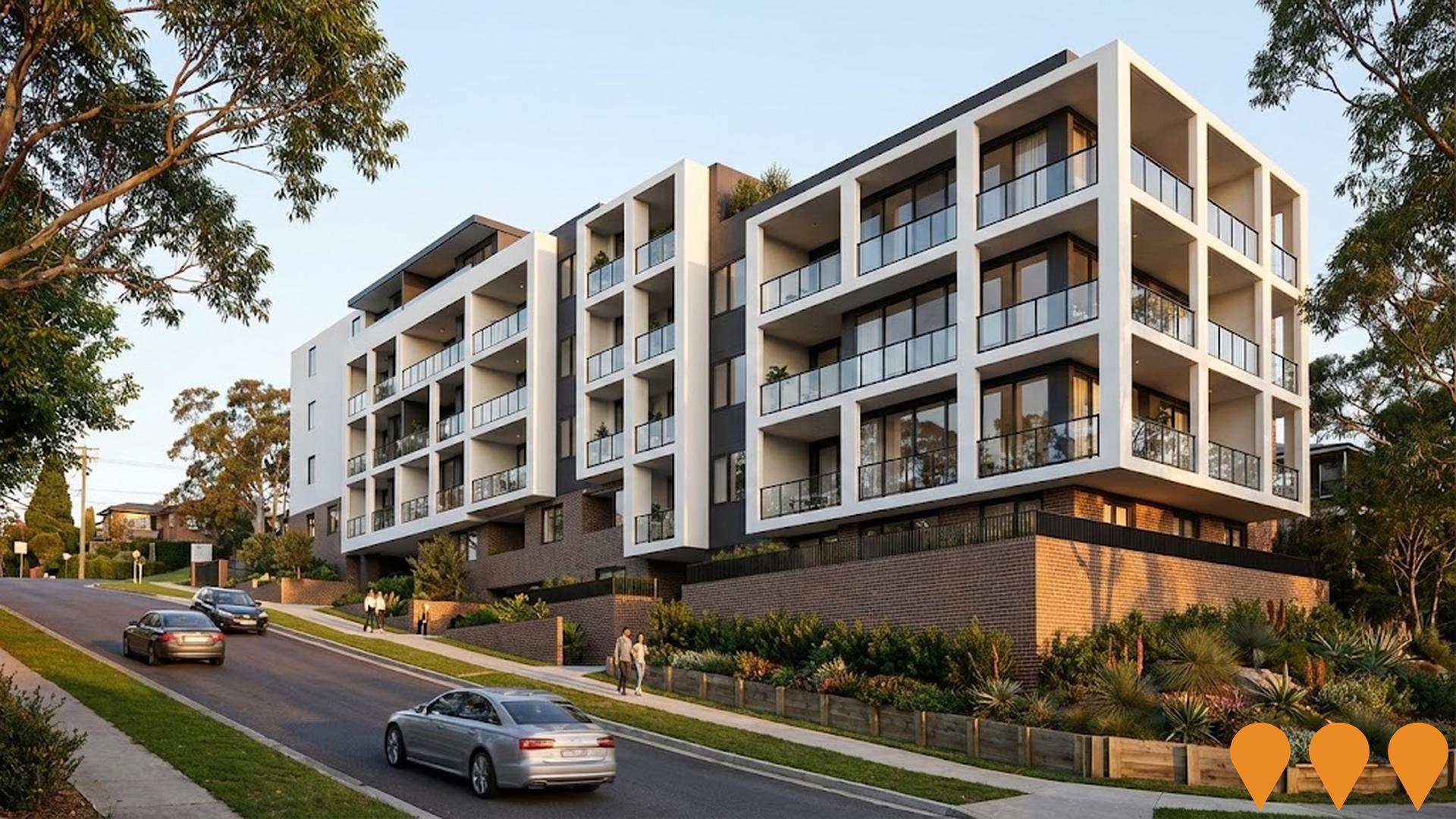
Victorian Renewable Energy Zones
VicGrid, a Victorian Government agency, is coordinating the planning and staged declaration of six proposed onshore Renewable Energy Zones (plus a Gippsland shoreline zone to support offshore wind). The 2025 Victorian Transmission Plan identifies the indicative REZ locations, access limits and the transmission works needed to connect new wind, solar and storage while minimising impacts on communities, Traditional Owners, agriculture and the environment. Each REZ will proceed through a statutory declaration and consultation process before competitive allocation of grid access to projects.
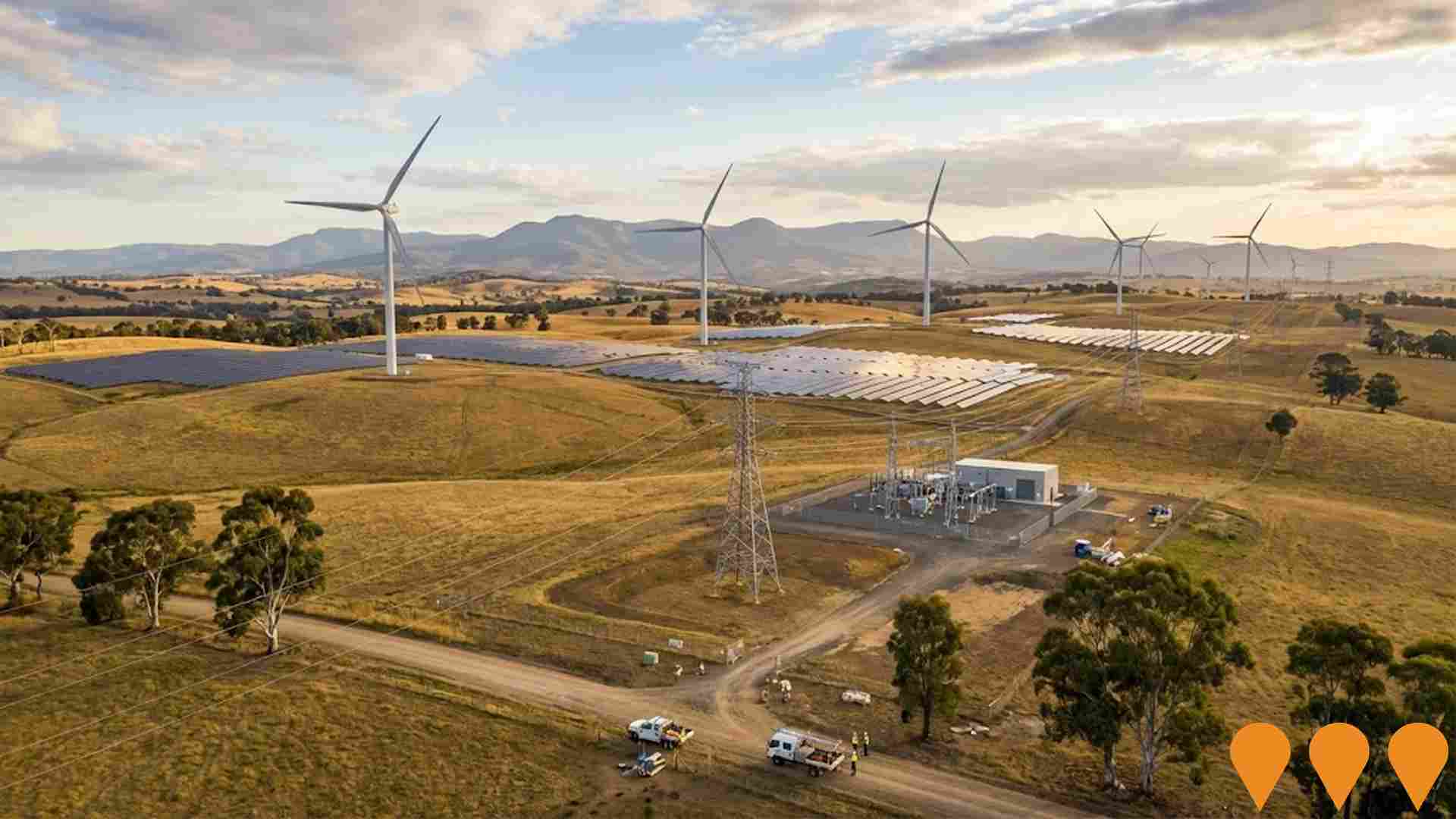
NSW Renewable Energy Zones (REZ) Program
NSW is delivering five Renewable Energy Zones (Central-West Orana, New England, South West, Hunter-Central Coast and Illawarra) to coordinate new wind and solar generation, storage and high-voltage transmission. The program is led by EnergyCo NSW under the Electricity Infrastructure Roadmap. Construction of the first REZ (Central-West Orana) transmission project commenced in June 2025, with staged energisation from 2028. Across the program, NSW targets at least 12 GW of new renewable generation and 2 GW of long-duration storage by 2030.
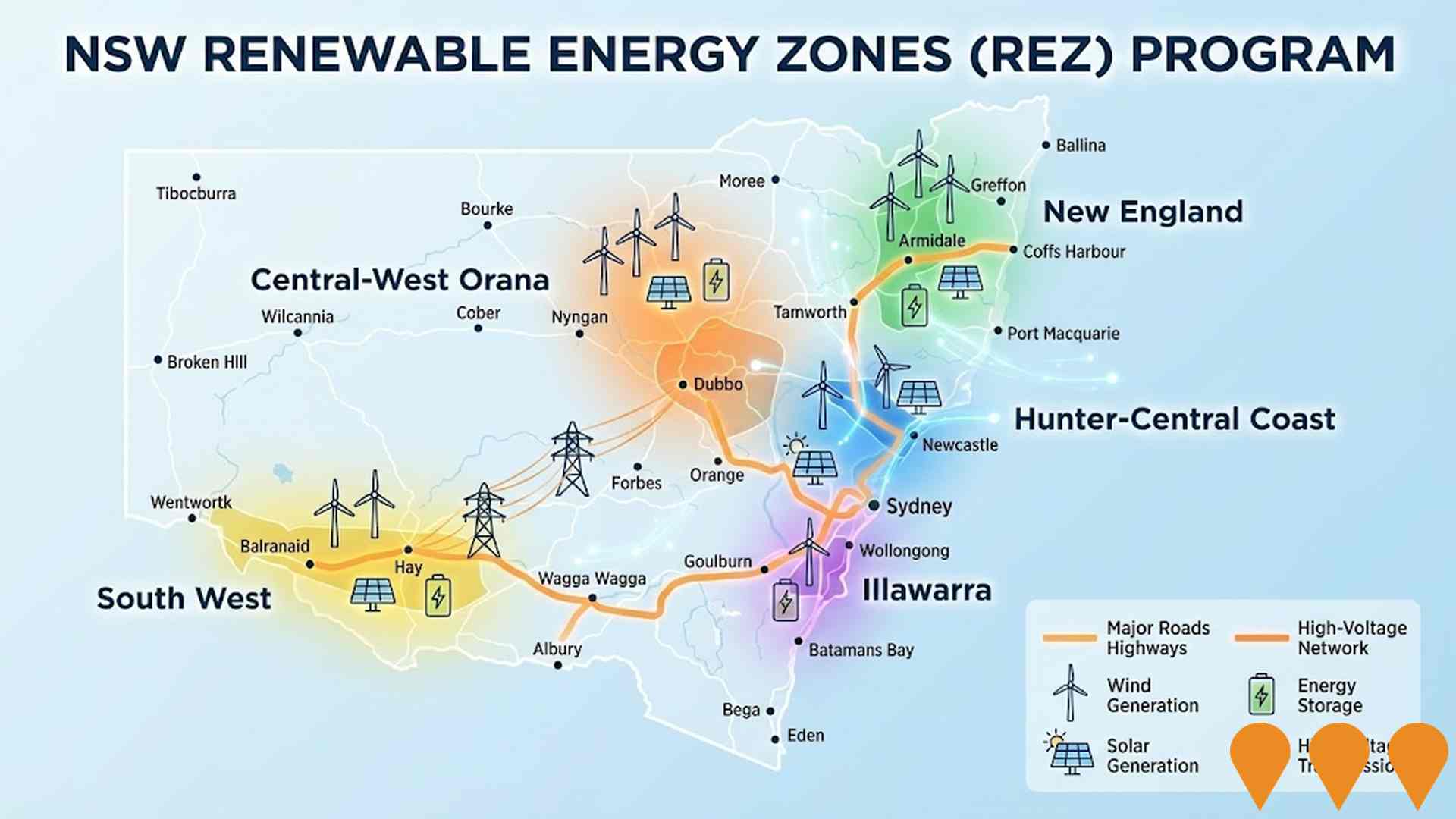
Employment
The labour market in Hamilton demonstrates typical performance when compared to similar areas across Australia
Hamilton Vic. has a skilled labour force with 4895 residents employed as of June 2025.
Its unemployment rate is 2.5%, lower than the Rest of Vic.'s 3.8%. Workforce participation is similar to the rest of Victoria at 57.4%. Key industries for Hamilton residents are health care & social assistance, retail trade, and construction.
Manufacturing employs only 4.4% of local workers compared to 7.7% in the Rest of Vic. Many residents commute elsewhere for work based on Census data. Between June 2024 and June 2025, Hamilton's labour force decreased by 1.9%, employment fell by 1.6%, leading to a slight reduction in unemployment rate by 0.2 percentage points. In contrast, the Rest of Vic.'s employment contracted by 0.9% with an increase in unemployment rate by 0.4 percentage points. Jobs and Skills Australia's national employment forecasts from May 2025 project a 6.6% growth over five years and 13.7% over ten years nationally. Applying these projections to Hamilton's employment mix suggests local growth of approximately 6.5%% over five years and 13.6% over ten years, assuming constant population projections.
Frequently Asked Questions - Employment
Income
Income figures position the area below 75% of locations analysed nationally by AreaSearch
Hamilton's median income among taxpayers was $47,738 in financial year 2022. The average income stood at $57,201 during the same period. In comparison, Rest of Vic.'s median and average incomes were $48,741 and $60,693 respectively. Based on Wage Price Index growth of 12.16% since financial year 2022, current estimates for Hamilton's median income would be approximately $53,543 as of September 2025, with the average being around $64,157. According to the 2021 Census, household incomes in Hamilton fall between the 17th and 27th percentiles nationally. Income analysis shows that 30.1% of residents (3,190 people) earn within the $1,500 - 2,999 bracket, aligning with the regional trend where this cohort also represents 30.3%. Despite modest housing costs allowing for 88.9% income retention, Hamilton's total disposable income ranks at just the 22nd percentile nationally.
Frequently Asked Questions - Income
Housing
Hamilton is characterized by a predominantly suburban housing profile, with a higher proportion of rental properties than the broader region
Hamilton's dwelling structure, as per the latest Census, consisted of 91.4% houses and 8.6% other dwellings (semi-detached, apartments, 'other' dwellings). This compares to Non-Metro Vic.'s 93.1% houses and 6.8% other dwellings. Hamilton's home ownership rate was 43.3%, with the rest of dwellings either mortgaged (32.3%) or rented (24.4%). The median monthly mortgage repayment in Hamilton was $1,083, aligning with Non-Metro Vic.'s average. The median weekly rent figure was $235, compared to Non-Metro Vic.'s $220. Nationally, Hamilton's mortgage repayments were significantly lower than the Australian average of $1,863, while rents were substantially below the national figure of $375.
Frequently Asked Questions - Housing
Household Composition
Hamilton features high concentrations of lone person households, with a fairly typical median household size
Family households constitute 62.1% of all households, including 22.7% couples with children, 28.5% couples without children, and 10.1% single parent families. Non-family households comprise the remaining 37.9%, with lone person households at 35.8% and group households making up 2.1%. The median household size is 2.2 people, which matches the average for the Rest of Vic.
Frequently Asked Questions - Households
Local Schools & Education
Educational outcomes in Hamilton fall within the lower quartile nationally, indicating opportunities for improvement in qualification attainment
The area's university qualification rate is 18.3%, significantly lower than Victoria's average of 33.4%. Bachelor degrees are the most common at 12.3%, followed by postgraduate qualifications (3.3%) and graduate diplomas (2.7%). Vocational credentials are prevalent, with 37.8% of residents aged 15+ holding them - advanced diplomas at 9.5% and certificates at 28.3%. Educational participation is high, with 25.2% currently enrolled in formal education: 9.2% in primary, 8.0% in secondary, and 2.0% in tertiary education.
Twelve schools serve 2,365 students, with typical Australian conditions (ICSEA: 989) and balanced opportunities. The educational mix includes four primary, two secondary, and six K-12 schools. As an education hub, the area has 22.3 school places per 100 residents, above the regional average of 14.1, attracting students from nearby communities. Note: for schools with 'n/a' enrolments, refer to the parent campus.
Frequently Asked Questions - Education
Schools Detail
Nearby Services & Amenities
Transport
Transport servicing is low compared to other areas nationally based on assessment of service frequency, route connectivity and accessibility
Transport analysis shows 71 active transport stops operating in Hamilton, consisting of a mix of buses. These stops are served by 11 individual routes, collectively offering 236 weekly passenger trips. Transport accessibility is rated as good, with residents typically located 307 meters from the nearest transport stop.
Service frequency averages 33 trips per day across all routes, equating to approximately 3 weekly trips per individual stop.
Frequently Asked Questions - Transport
Transport Stops Detail
Health
Health performance in Hamilton is well below average with prevalence of common health conditions notable across both younger and older age cohorts
Hamilton faces significant health challenges, with common conditions prevalent among both younger and older age groups. Only approximately 48% (~5,119 people) have private health cover, lower than the national average of 55.3%.
The most frequent medical issues are arthritis (affecting 11.3%) and mental health concerns (9.3%), while 61.6% report being free from ailments, slightly below the Rest of Vic's 62.4%. Hamilton has a lower proportion of residents aged 65 and over at 25.3% (2,682 people), compared to Rest of Vic's 26.3%, but performs better in overall health metrics.
Frequently Asked Questions - Health
Cultural Diversity
Hamilton is considerably less culturally diverse than average when assessed alongside AreaSearch's national rankings for language and cultural background related metrics
Hamilton's cultural diversity was found to be below average, with 91.3% of its population being citizens, born in Australia (91.6%), and speaking English only at home (96.1%). The predominant religion in Hamilton is Christianity, comprising 53.9% of the population, compared to 50.5% across Rest of Vic.. In terms of ancestry, the top three represented groups are Australian (32.9%), English (31.4%), and Scottish (10.4%).
Notably, German ethnicity is overrepresented in Hamilton at 5.5%, compared to 4.8% regionally; Dutch ethnicity is similarly represented at 1.4%; Irish ethnicity is slightly underrepresented at 8.8%, compared to 8.9%.
Frequently Asked Questions - Diversity
Age
Hamilton hosts an older demographic, ranking in the top quartile nationwide
Hamilton's median age is 44 years, similar to Rest of Vic.'s 43 years, and above the national average of 38 years. Compared to Rest of Vic., Hamilton has a higher percentage of residents aged 25-34 (12.7%) but fewer residents aged 35-44 (10.7%). Between the 2016 and 2021 censuses, the 25-34 age group increased from 11.2% to 12.7%, while the 55-64 cohort decreased from 13.2% to 12.1%. By 2041, Hamilton's population is expected to shift notably in terms of age composition. The 25-34 group is projected to grow by 26%, reaching 1,693 people from 1,345. Conversely, the 5-14 and 65-74 cohorts are expected to decline in population.
